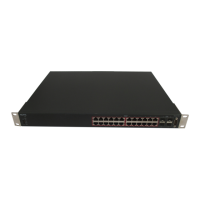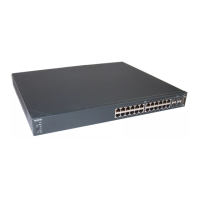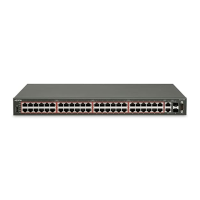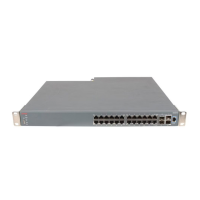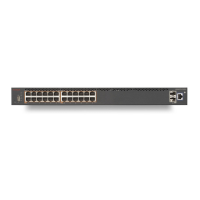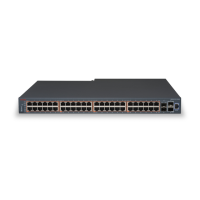Field Description
PortNum Indicates the port number
PolicyAppType Shows the policy application type.
PolicyVlanID Indicates the extension of the VLAN Identifier
for the
port, as defined in IEEE 802.1P-1998.
A value of 1 through 4094 is used to define a
valid PVID. A value of 0 is used if the device
is using priority tagged frames, meaning that
only the 802.1p priority level is significant and
the default VID of the ingress port is being
used instead. A value of 4095 is reserved for
implementation use.
PolicyPriority Indicates the value of the 802.1p priority
which is associated with the local port. The
default value is 6.
PolicyDscp Contains the value of the Differentiated
Service Code Point (DSCP) as defined in
IETF RFC 2474 and RFC 2475 that is
associated with the given port on the local
system. The default value is 46.
PolicyTagged Indicates whether the application is using a
tagged VLAN, untagged VLAN, or does not
support a port based VLAN operation.
Creating LLDP MED policies using EDM
Use this procedure to create a new LLDP MED policy for the local system.
Procedure steps
1.
From the navigation tree, double-click Edit.
2. In the Edit tree, double-click Diagnostics.
3. In the Diagnostic tree, double-click 802.1AB.
4. In the 802.1AB tree, double-click Port MED.
5. In the work area, click the Local Policy tab.
6. Click Insert .
7. To select a port to create a policy for, click the PortNum elipsis.
8. Click Ok .
9. In the PolicyAppType section, select one or both checkboxes.
10. To select a VLAN identifier for the selected port, click the PolicyVlanID elipsis.
11. Click Ok .
LLDP Port MED configuration using EDM
Configuration — System April 2011 317

